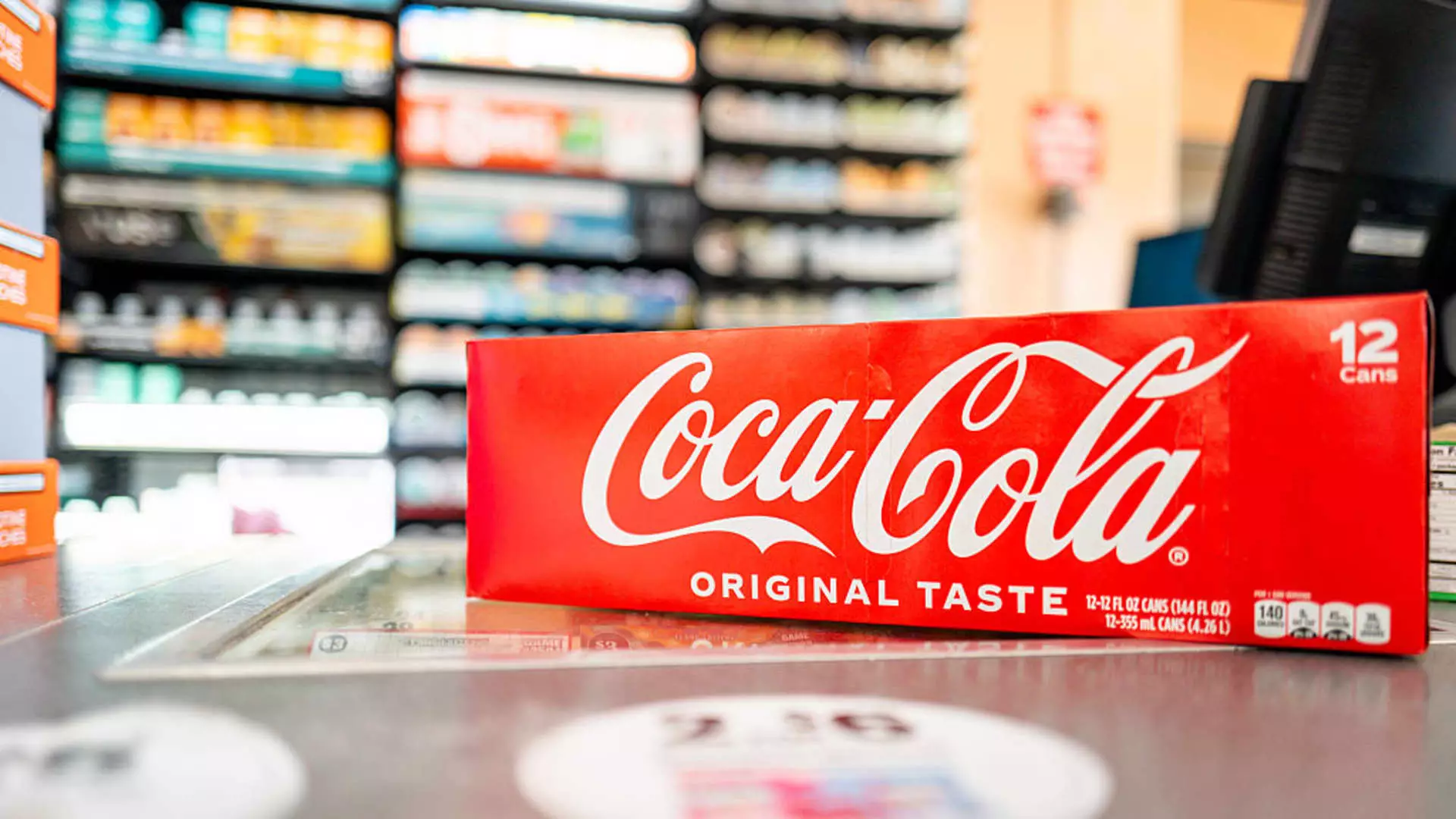Coca-Cola’s recent quarterly earnings might initially seem impressive—beating analyst expectations on both revenue and earnings per share. However, a closer look reveals a complex picture that suggests the company’s resilience is more fragile than it appears. While the headline numbers paint a picture of strength, the reality is that global volume declines and shifting consumer preferences signal underlying vulnerabilities that could undermine future growth. The market’s modest reaction, with shares falling less than 1% in premarket trading, perhaps indicates skepticism among investors who see through the veneer of positive headlines.
The report cited a 1% increase in net sales and a 5% organic revenue growth—figures that sound encouraging but are somewhat superficial. These figures are often magnified by pricing strategies and currency fluctuations, masking the fact that physical consumption of Coke’s products continues to decline. As global unit case volume drops 1%, the company is clearly losing ground to other beverage options, health-conscious products, and shifting preferences, especially among younger consumers.
Market Dynamics: A Tale of Resilience and Decline
Despite some markets showing improvement, Coke’s overall global volume decline is troubling. The North American market’s 1% dip—though better than previous quarters—highlight the persistent challenge of declining soda consumption, especially in the United States, where health trends and social movements have shifted consumer behavior away from sugary drinks. The fact that demand has become less resilient in many regions underscores a strategic vulnerability: traditional soft drinks are no longer the backbone of beverage companies’ growth.
Conversely, the European market has shown signs of stability, with volume growth of 3% in EMEA. But is this enough to counterbalance the declines elsewhere? Not entirely. The overall volume decline across the global segment of sparkling soft drinks and the 4% drop in juice and dairy categories suggest a broader erosion of Coke’s core markets. These declines are symptomatic of a changing consumer landscape that favors healthier, more innovative options—an area where Coke has been slow to adapt.
The Illusory Nature of Pricing and Market Strategy
Coca-Cola’s strategy, as often is the case, relies heavily on pricing power and selective marketing. Their reported revenue growth is partly attributed to price increases, which may temporarily boost margins but do little to reverse the declining volumes. The company’s attempt to reinforce growth through new product introductions, like introducing cane sugar versions of soda in the U.S., feels more reactive than strategic—an effort to cling to traditional customers rather than embracing the shift towards healthier alternatives.
Moreover, the company’s commentary on consumer confidence and geopolitical tensions seems overly optimistic. While certain markets, like Europe, have shown signs of stabilization, the broader picture points to an ongoing struggle with consumer trust and demand. The social media saga around the alleged reporting of undocumented workers in the U.S.—which Coke denies—showcases how fragile brand perception can affect sales, particularly in a highly polarized society.
A Wavering Future in a Changing Market
Coca-Cola’s future success hinges on its ability to navigate a landscape that is increasingly skeptical of its flagship sugary drinks. The company’s steady earnings might provide a temporary buffer, but they are not enough to mask the bigger trend: declining consumption of traditional sodas and the rising consumer demand for healthier, more functional beverages.
The plan to expand organic revenue growth to 5-6% in 2025 is ambitious yet increasingly precarious. Unless Coca-Cola diversifies more aggressively into health-oriented products and reduces reliance on pricing strategies to sustain growth, it risks falling behind more innovative competitors. Meanwhile, macroeconomic pressures, inflation, and geopolitical instability only exacerbate consumer hesitance.
While the company claims to influence its trajectory positively, the reality is that Coke’s core business remains vulnerable. The beverage giant is walking a tightrope: maintaining profitability while trying to reinvent itself in a world that’s rapidly moving away from its traditional offerings. Without significant strategic shifts, the recent earnings report could be seen as a temporary blip rather than a sign of sustained growth.

